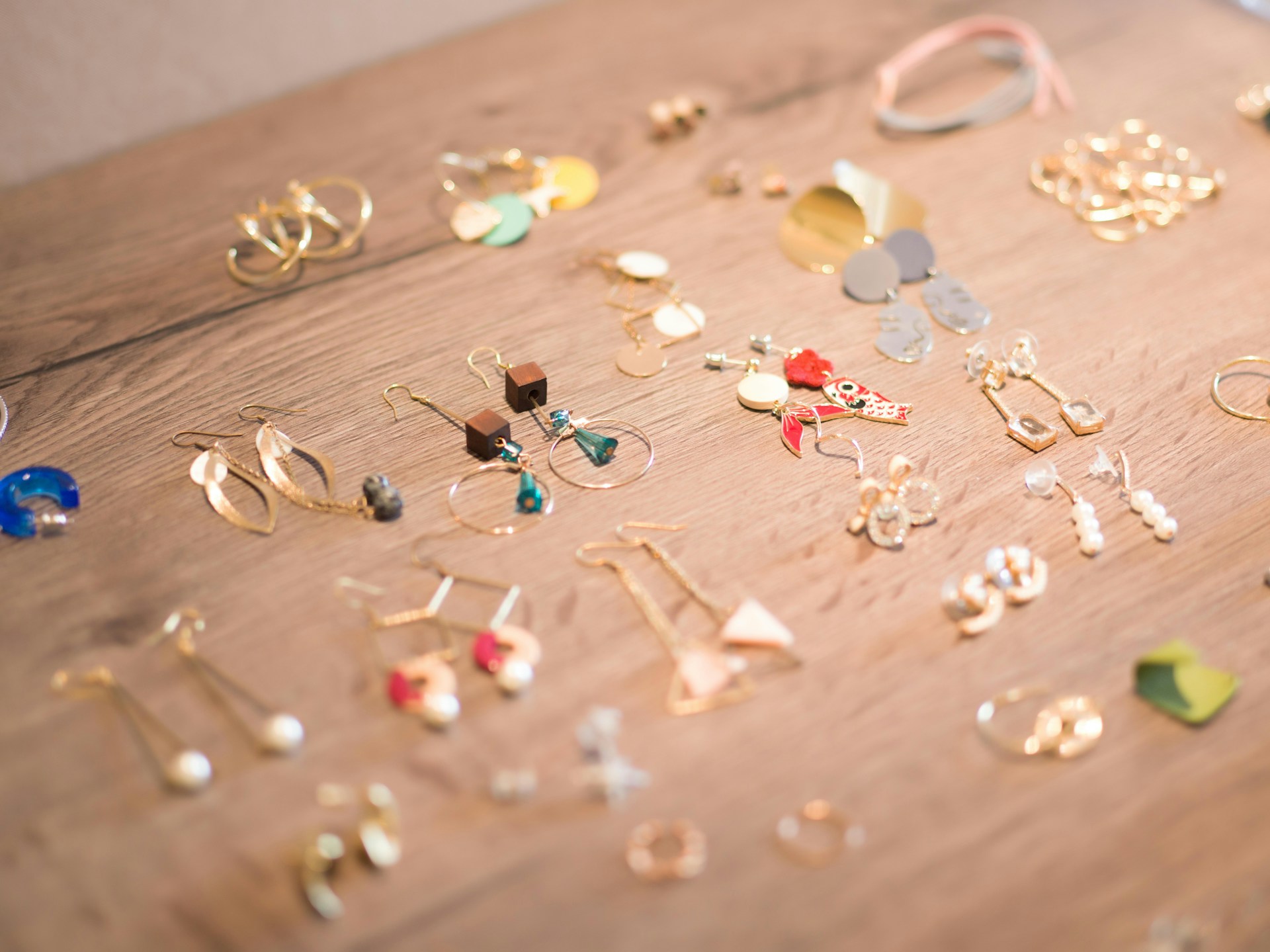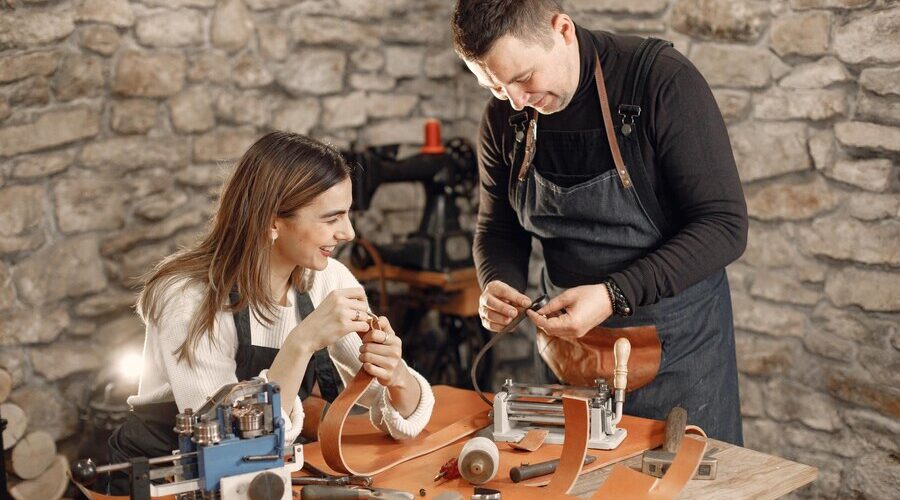Jewelry-making is an age-old craft that combines creativity and technical skill to create pieces that are both beautiful and durable. Over centuries, artisans have developed a variety of techniques to shape metals, set stones, and add intricate designs, each requiring unique tools and expertise.
Whether you’re a beginner looking to understand the basics or an enthusiast hoping to expand your knowledge, this guide will explore the most popular jewelry-making techniques, from casting to engraving.
1. Casting: The Foundation of Metal Shaping
Casting is one of the oldest methods in jewelry making and is foundational for creating intricate shapes and designs in metal. In this process, a mold is created, typically using wax, and then filled with molten metal to form the final piece. The lost-wax casting technique, where the wax mold melts away once the metal is poured, is widely used. This method allows jewelers to produce multiple identical pieces, making it ideal for commercial jewelry production.
Modern casting tools include vacuum casting machines and centrifugal casting machines, which help push molten metal into the mold, ensuring a precise, high-quality finish. Casting is often the first step in the jewelry-making process and is used to create everything from rings to intricate pendants and bracelets.
2. Soldering: Joining Metals with Precision
Soldering is a technique used to join metal pieces together, an essential step for creating complex designs with multiple components. Jewelers use a soldering torch to heat metals to their melting point, applying a filler metal called solder, which flows into the joint and bonds the pieces upon cooling.
There are different types of soldering, including hard, medium, and easy soldering, each with varying melting points. This allows jewelers to build layered designs without affecting earlier joins. Soldering is crucial in crafting chains, attaching clasps, and creating custom settings. It requires skill and precision, as excessive heat or improper technique can damage delicate materials like gemstones.
3. Stone Setting: Securing Gemstones in Style
Stone setting is the art of securing gemstones in jewelry in a way that highlights their natural beauty while ensuring they remain firmly in place. There are various stone-setting techniques, each offering a unique aesthetic and level of security.
- Prong Setting: This classic setting style uses small metal prongs to hold the stone, allowing maximum light to pass through and enhancing the gem’s brilliance.
- Bezel Setting: A more protective setting style, where a metal rim encircles the gemstone, making it ideal for delicate stones or jewelry meant for everyday wear.
- Pavé and Micro-Pavé: Small gemstones are set closely together with minimal metal visible, creating a “paved” effect that gives jewelry a sparkling surface.
Each stone setting technique has its own tools and challenges. Stone setting is often considered an art form in itself, as the jeweler must take care to prevent scratching or damaging the stone during the setting process.
4. Forging and Hammering: Shaping Metal with Texture
Forging involves shaping metal using heat and force, while hammering is a technique to add texture to a piece. Both techniques require metalworking tools like hammers, anvils, and sometimes torches, depending on the thickness of the metal and the desired effect.
Hammering can create textures that add depth and interest to a piece of jewelry, from a soft hammered look to a bold, rustic texture. Forging, on the other hand, is often used to create specific shapes like cuffs or rings by applying force to the metal. These techniques require skill and practice, as improper hammering or uneven force can compromise the structure and look of the jewelry.
5. Enameling: Adding Color and Depth
Enameling is a technique used to add vibrant color to jewelry by fusing powdered glass to metal under high heat. This technique has been used for centuries and can create stunning, colorful designs that add depth and personality to jewelry pieces. There are several enameling techniques, including cloisonné, where thin metal wires create compartments filled with enamel, and champlevé, where the metal is carved out to hold enamel.
Enameling requires precision and an understanding of how colors will interact when fired. Many jewelers use kiln or torch enameling, depending on the type and thickness of the metal. This technique is often used to create statement pieces, adding a pop of color to earrings, pendants, and brooches.
6. Filigree: Crafting Intricate, Lace-Like Designs
Filigree is an ancient jewelry-making technique where thin metal wires are twisted and shaped to create delicate, lace-like patterns. Traditionally used in gold and silver, filigree adds an air of elegance and intricacy to jewelry. Jewelers use pliers and other shaping tools to manipulate the wires, creating designs that are then soldered together.
This technique requires a high level of precision, as the wires must be carefully arranged and secured without breaking. Filigree is commonly found in vintage and antique jewelry, but it continues to be popular in modern designs for those who appreciate detailed craftsmanship. It’s a labor-intensive technique but yields breathtaking results, making it a favorite among skilled artisans.
7. Engraving: Adding Personal Touches and Details
Engraving is the technique of carving designs or text into metal to personalize or enhance a piece of jewelry. Using tools like gravers or specialized engraving machines, jewelers create intricate patterns, textures, or custom messages that add a unique touch to each piece.
Engraving can range from simple initials on a ring to elaborate floral patterns on a locket. Today, many jewelers use laser engraving for precision and speed, though hand engraving remains popular for those who value traditional craftsmanship. This technique is often used for custom jewelry, wedding bands, and heirlooms, as it allows customers to add personal meaning to their pieces.
Jewelry-making is a versatile art with a rich array of techniques that allow artisans to craft everything from simple rings to intricate, custom-made masterpieces. From foundational techniques like casting and soldering to advanced methods like enameling and engraving, each approach brings its own set of skills and tools to the craft.
Mastering these techniques not only improves the quality of the jewelry but also expands the range of styles and designs a jeweler can create. Whether you’re a beginner experimenting with different methods or an experienced jeweler refining your craft, each of these techniques contributes to the timeless appeal of handmade jewelry. By understanding and practicing these techniques, you can create pieces that reflect both your personal style and the rich traditions of jewelry-making.





Add comment